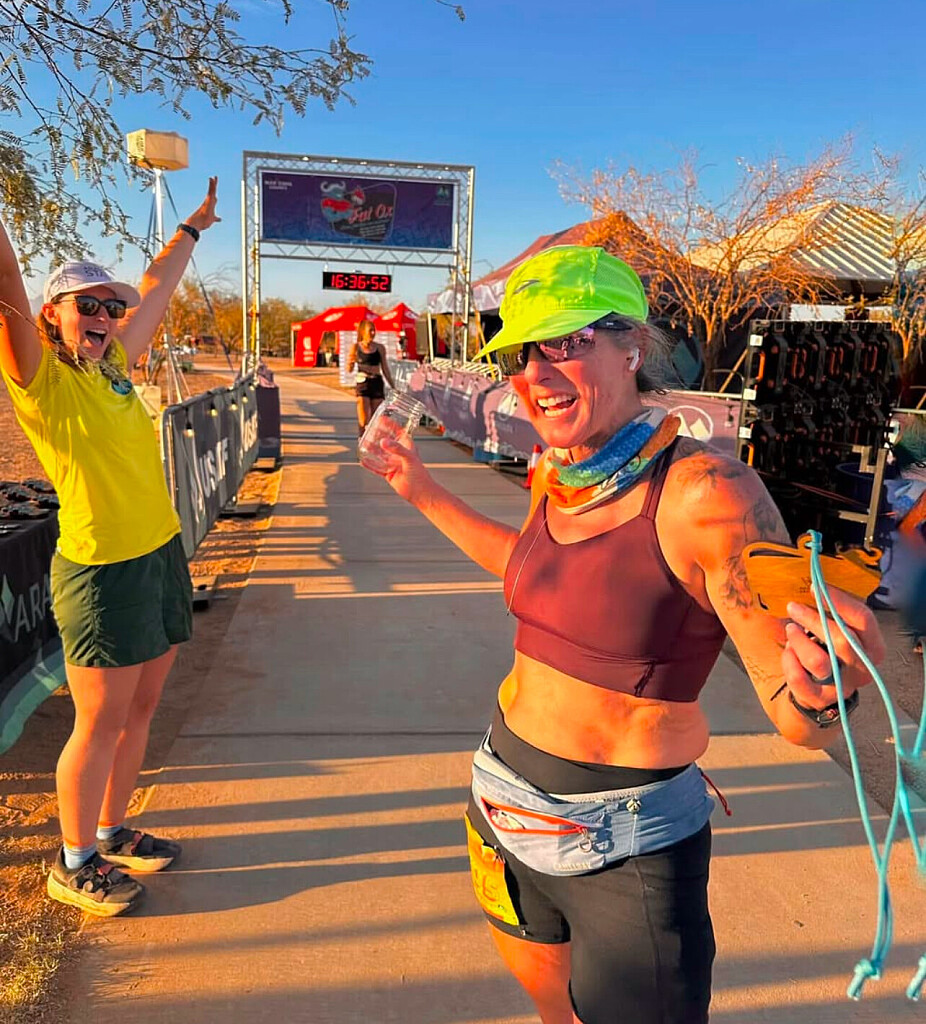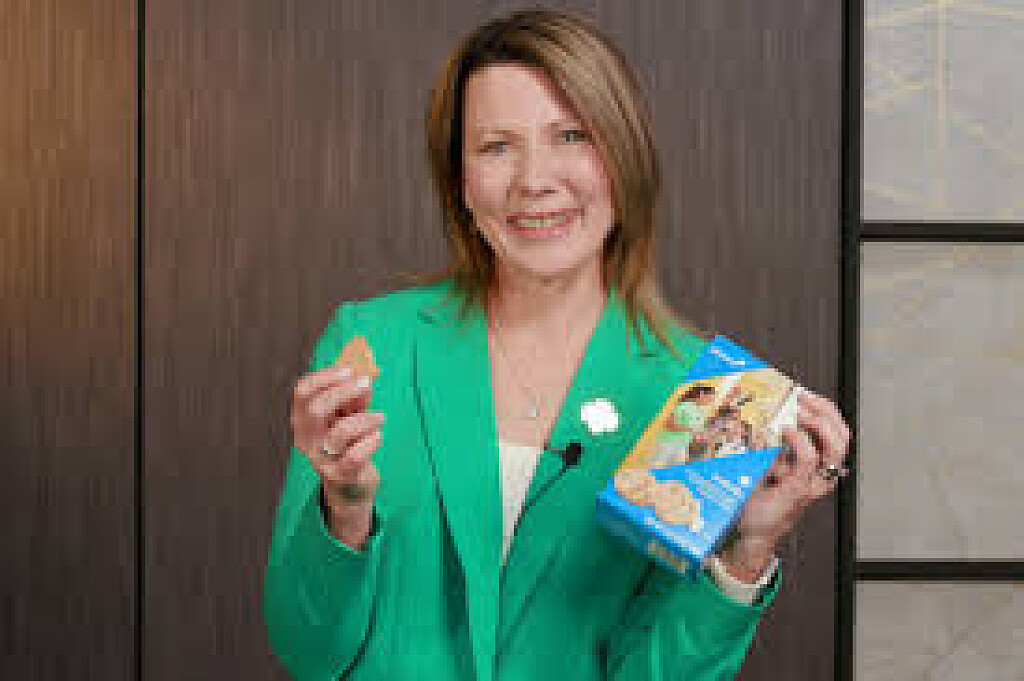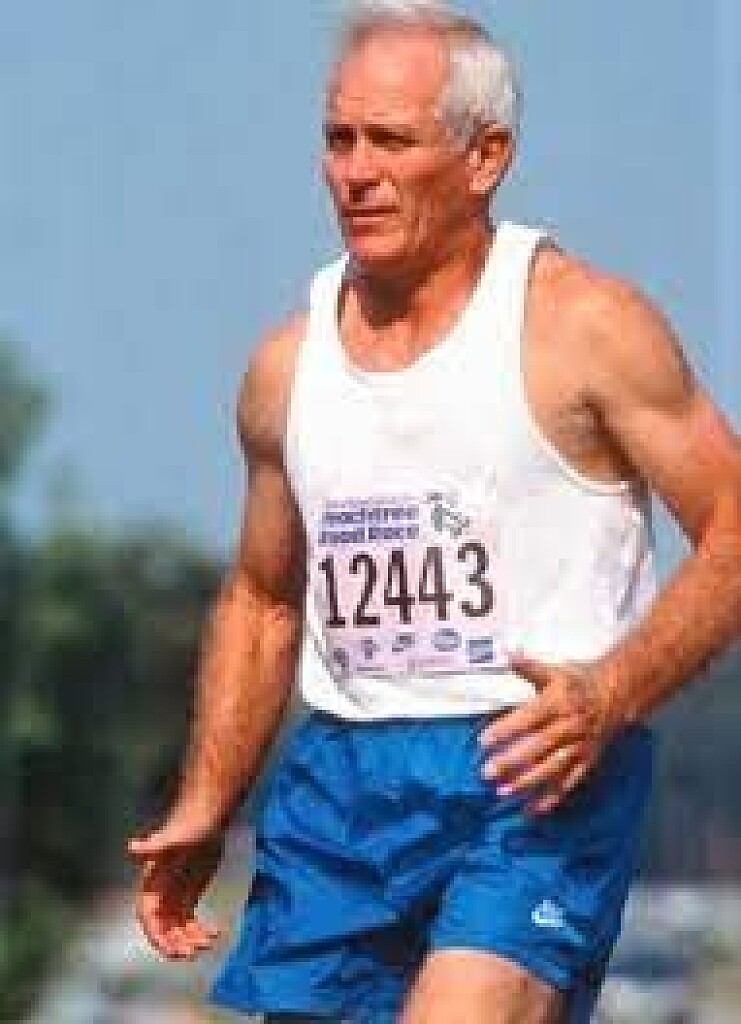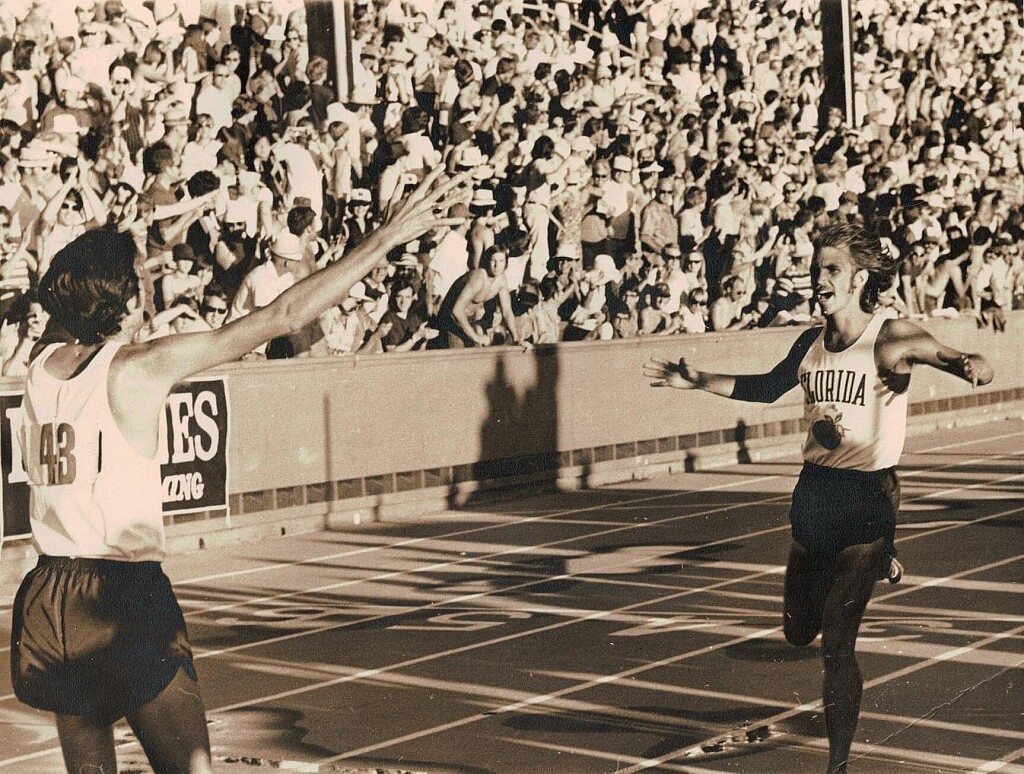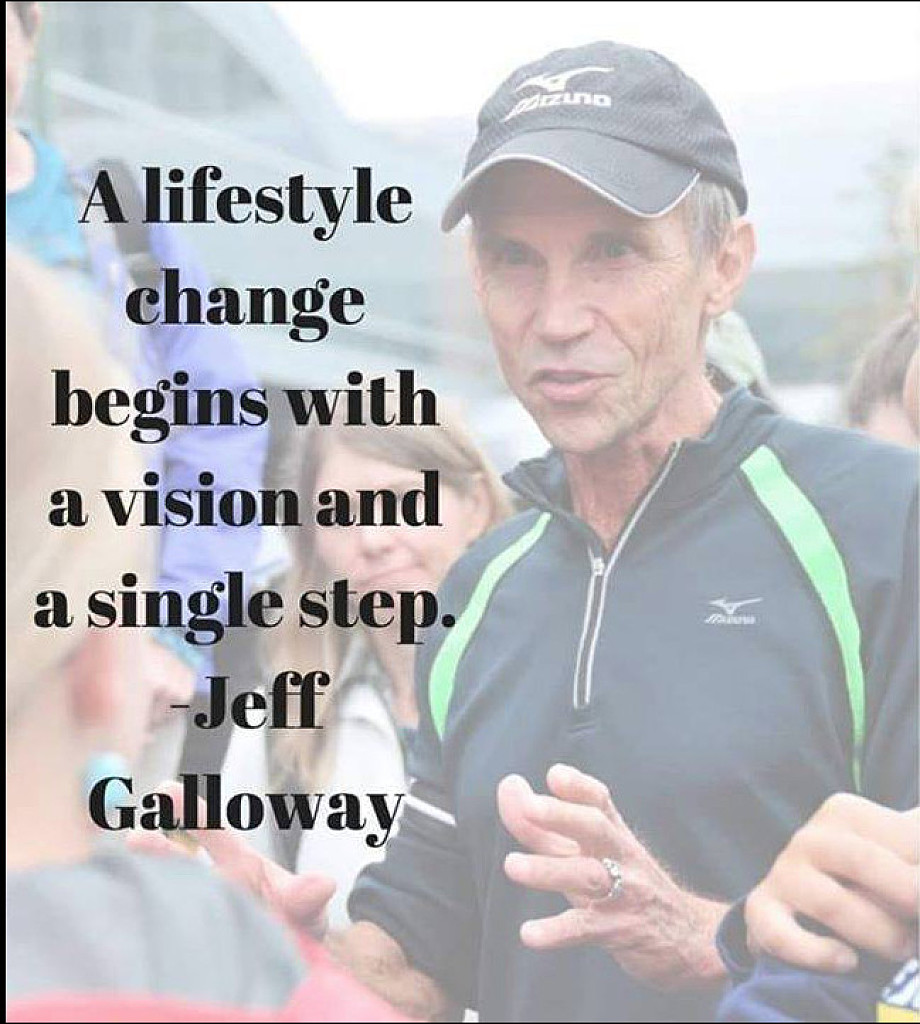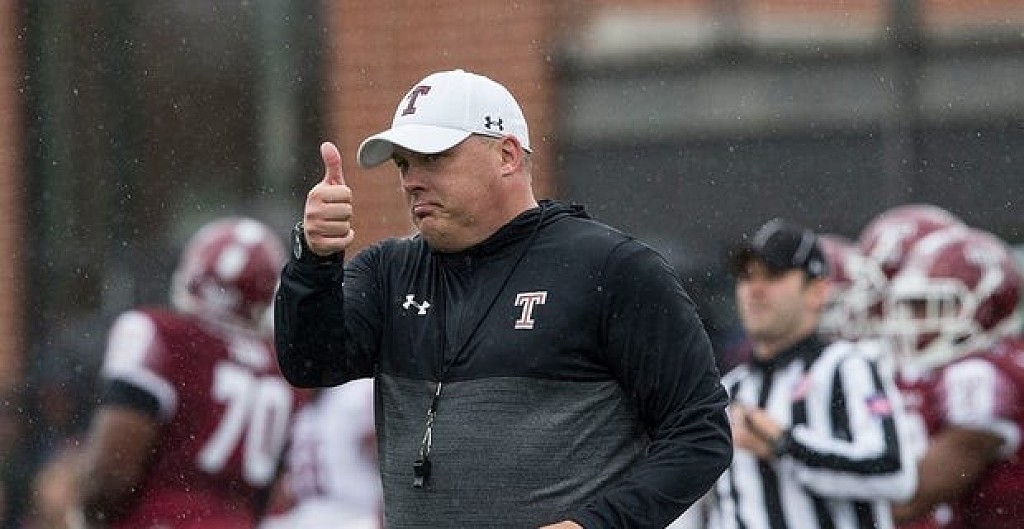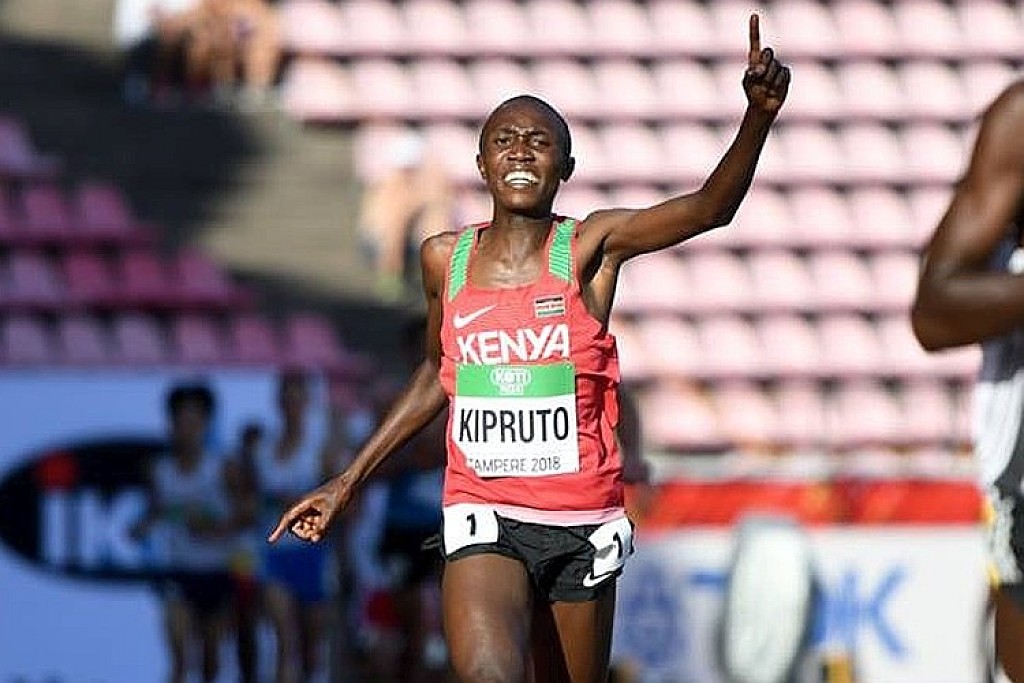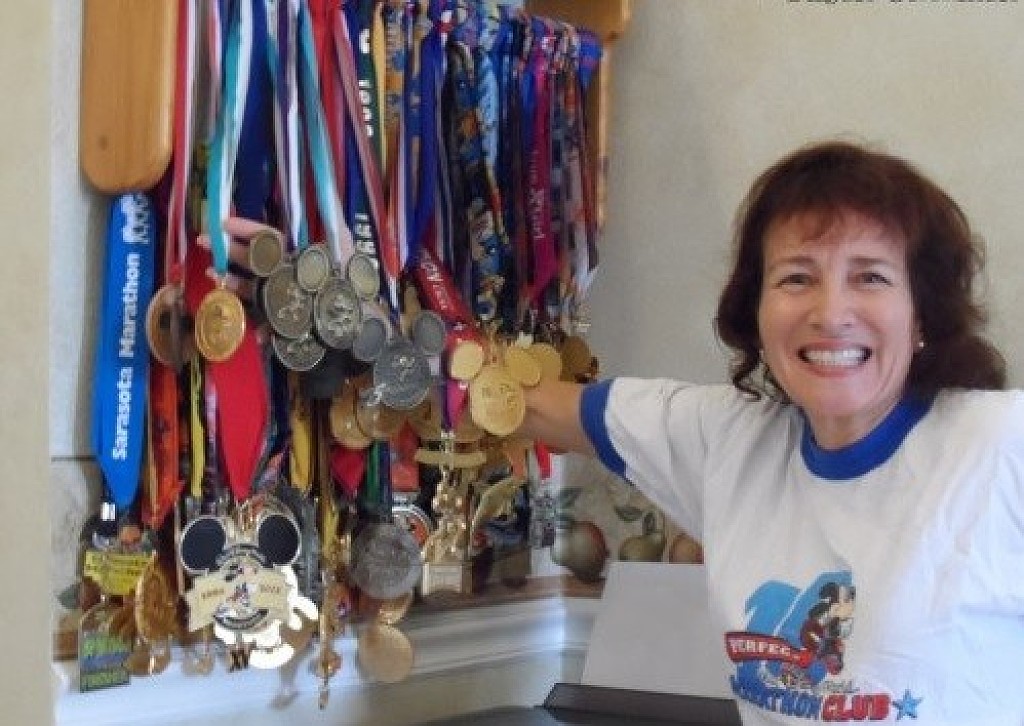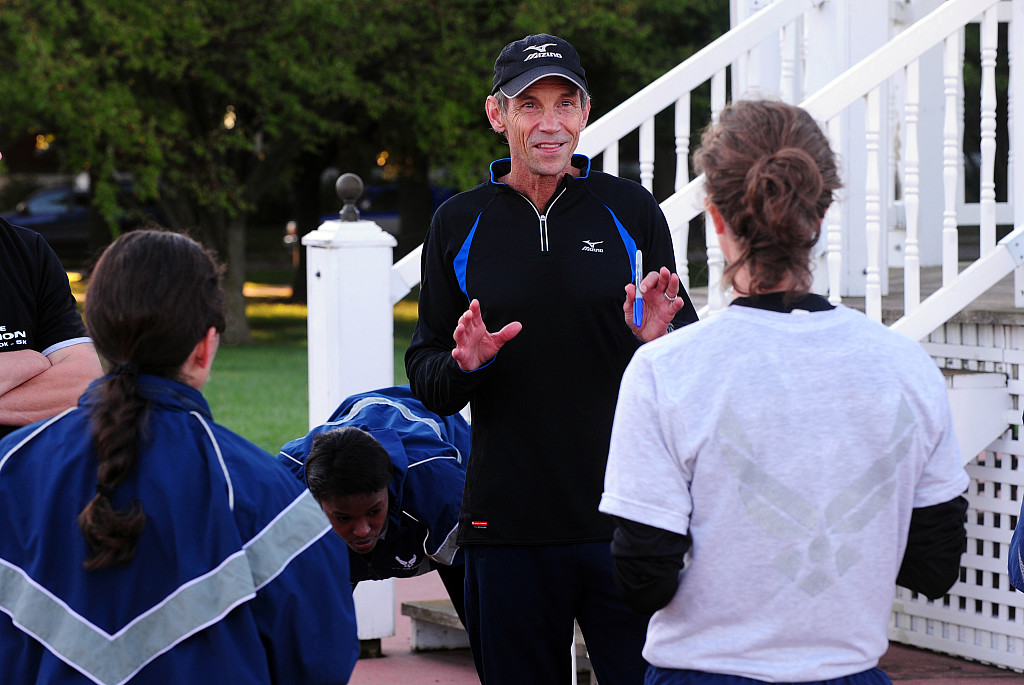Running News Daily
Running News Daily is edited by Bob Anderson. Send your news items to bob@mybestruns.com Advertising opportunities available. Train the Kenyan Way at KATA Kenya and Portugal owned and operated by Bob Anderson. Be sure to catch our movie A Long Run the movie KATA Running Camps and KATA Potato Farms - 31 now open in Kenya! https://kata.ke/
Index to Daily Posts · Sign Up For Updates · Run The World Feed
Articles tagged #Jeff Galloway
Today's Running News
How Long Should Your Longest Marathon Training Run Be?
Runners preparing for a marathon often ask, “How long should my longest training run be?” It’s a critical question, and the answer varies depending on the training philosophy you follow. Traditional plans, such as those from Hal Higdon and Jeff Galloway, typically suggest a peak long run of 20 miles, often done three to four weeks before race day. However, some, like Bob Anderson, founder of Runner’s World and My Best Runs, argue that pushing beyond 20 miles can better prepare the body and mind for the full 26.2-mile challenge.
Hal Higdon’s popular marathon training plans recommend a maximum long run of 20 miles, usually completed about three weeks before the race. Higdon believes this distance provides sufficient endurance while allowing adequate recovery. Similarly, Jeff Galloway, known for his run-walk-run method, suggests 20 miles as the peak long run, emphasizing injury prevention and recovery.
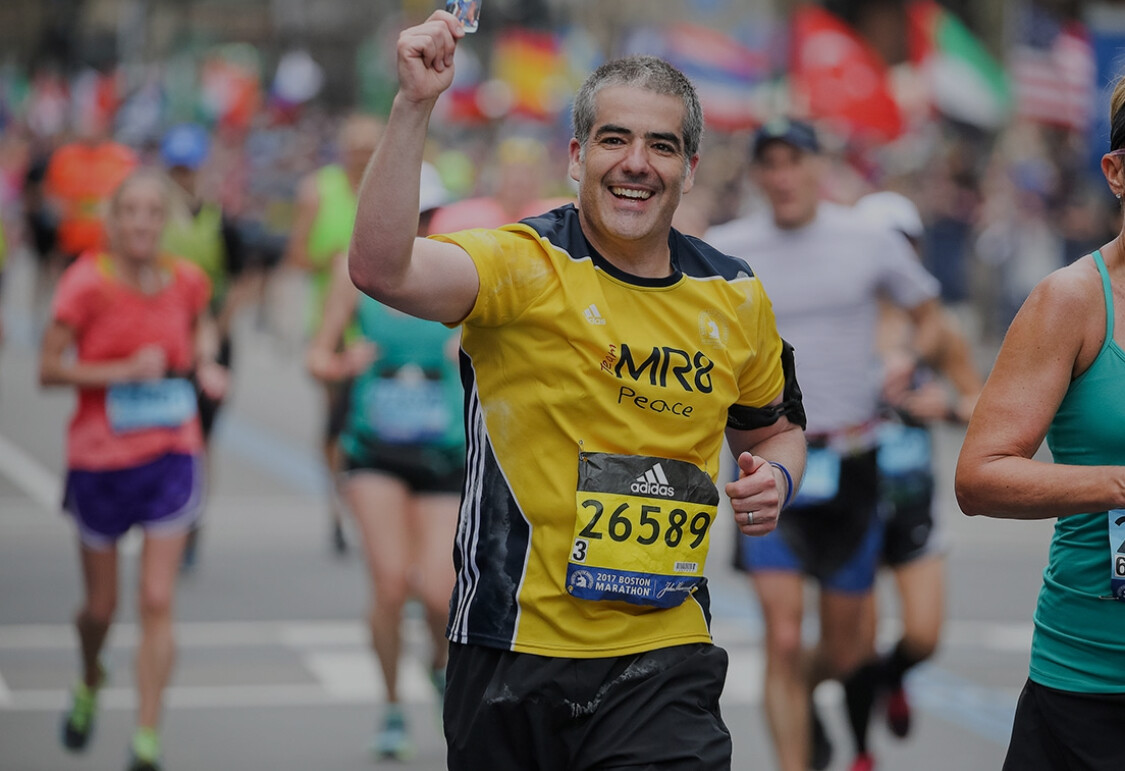
The reasoning behind stopping at 20 miles is that it’s far enough to build endurance but short enough to avoid excessive fatigue and potential injury. The final 6.2 miles, according to this approach, are covered by race-day adrenaline and the cumulative fitness gained throughout training.
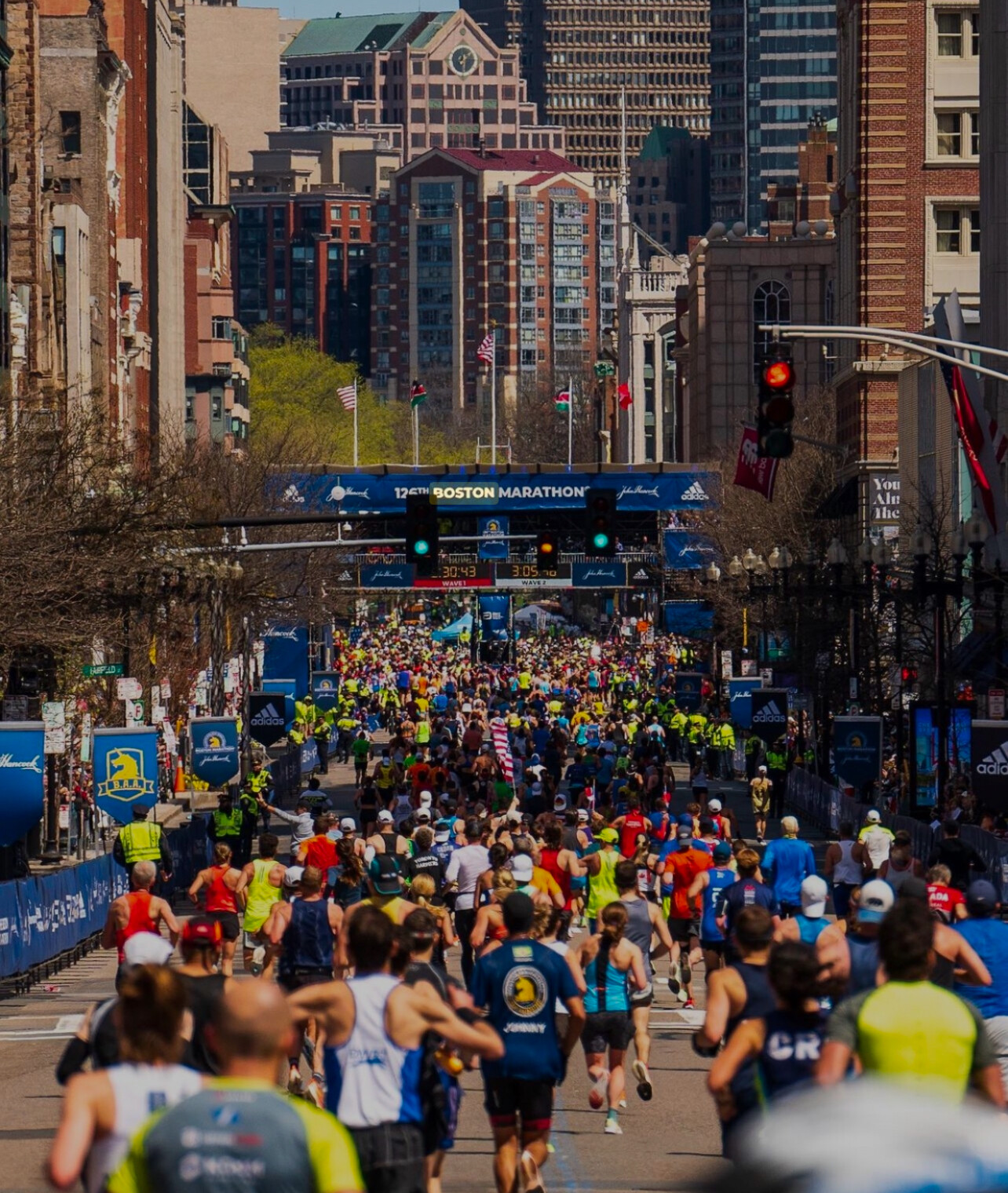
Bob Anderson, who has run 11 marathons and countless other races, questions the wisdom of capping the long run at 20 miles. “Why not do 25 miles or even more so your body is not experiencing a new distance on race day?” he says. Anderson believes that extending the long run to 23, 25, or even 28 miles builds both physical and mental resilience, reducing the risk of hitting the infamous “wall.”

Anderson’s personal experience underscores his point. He ran the Boston Marathon in 3:32:17 at age 65 in 2013. In preparation, he completed one 23-mile training run but had planned to do another of at least 25 to 26 miles. “I had a 3:30 going but fell apart just before 25 miles,” Anderson recalls. “My worst mile was mile 26. I really think if I had gotten in a 25-26 mile training run, I would have clocked my goal of 3:30—but I will never know.”
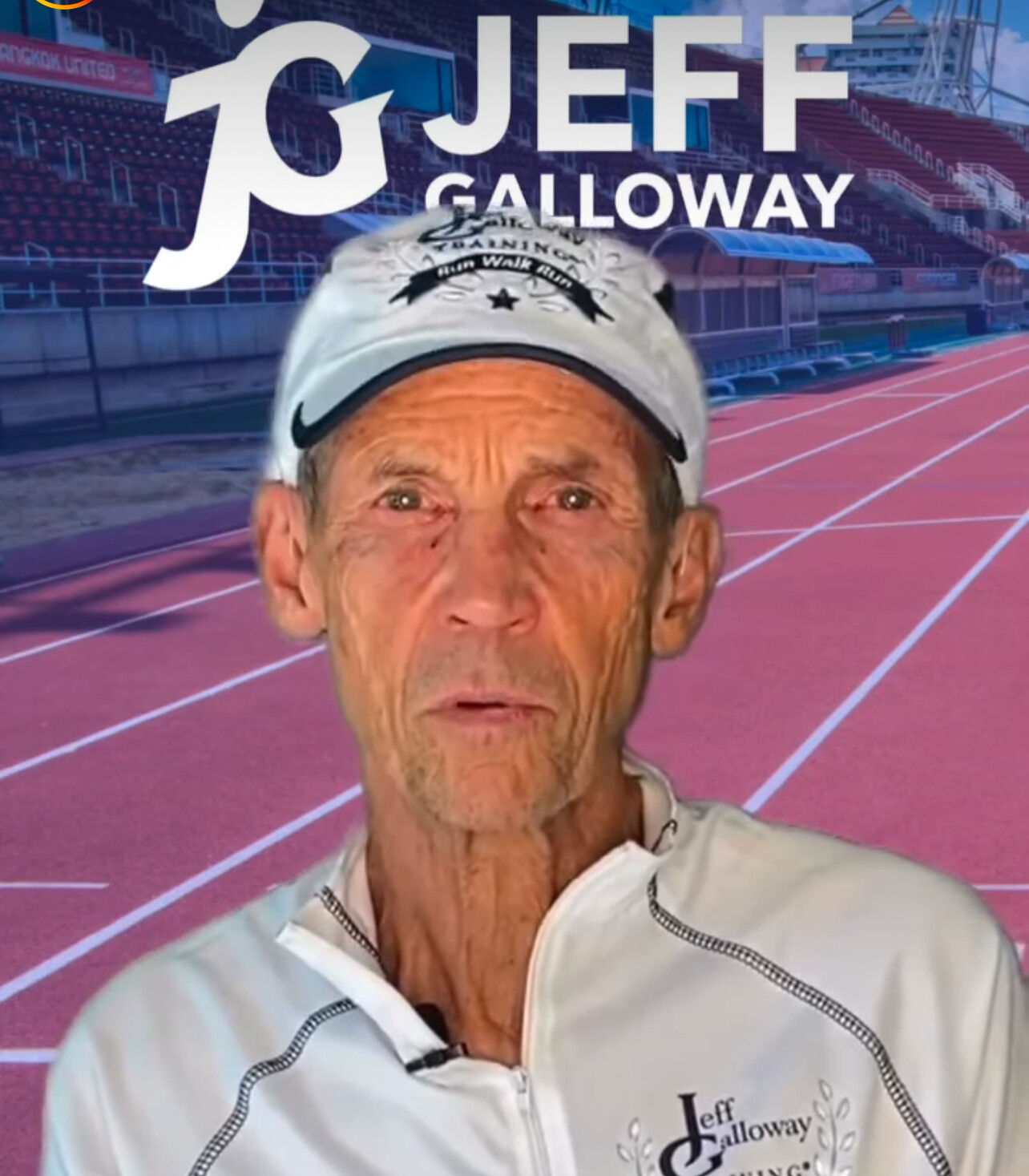
While pushing past 20 miles increases fatigue, Anderson suggests adjusting the pace—keeping these longer runs slower—and allowing ample recovery. He notes that elite runners often train beyond marathon distance, albeit at an easy effort, to condition their bodies for race day.
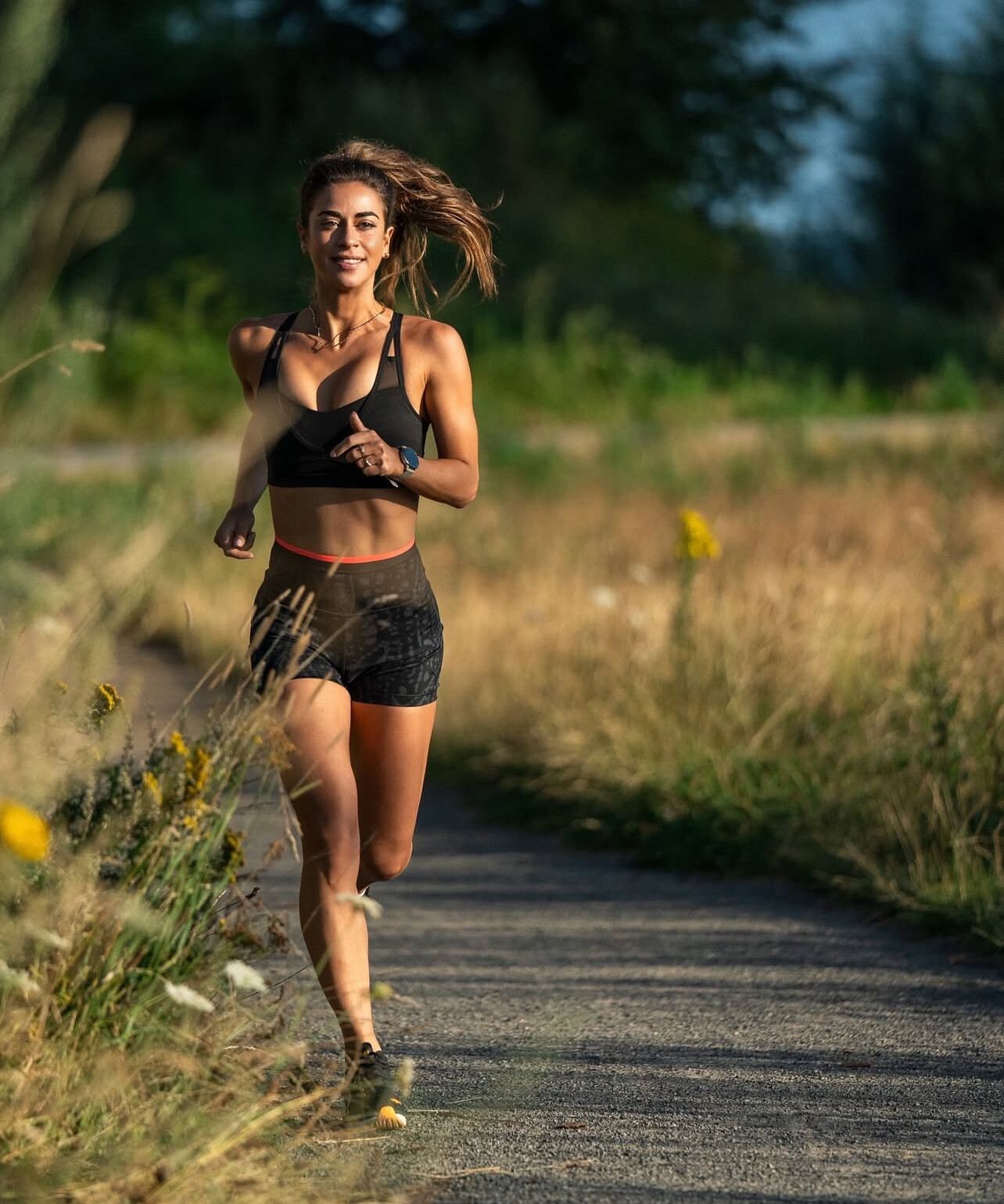
So, what’s the right approach for you? It depends on your experience level, injury history, and goals. Beginner runners might find the 20-mile limit safest, while intermediate runners could benefit from extending to 22-23 miles. Experienced runners, like Anderson, may find 25 miles provides the conditioning needed to succeed on race day.
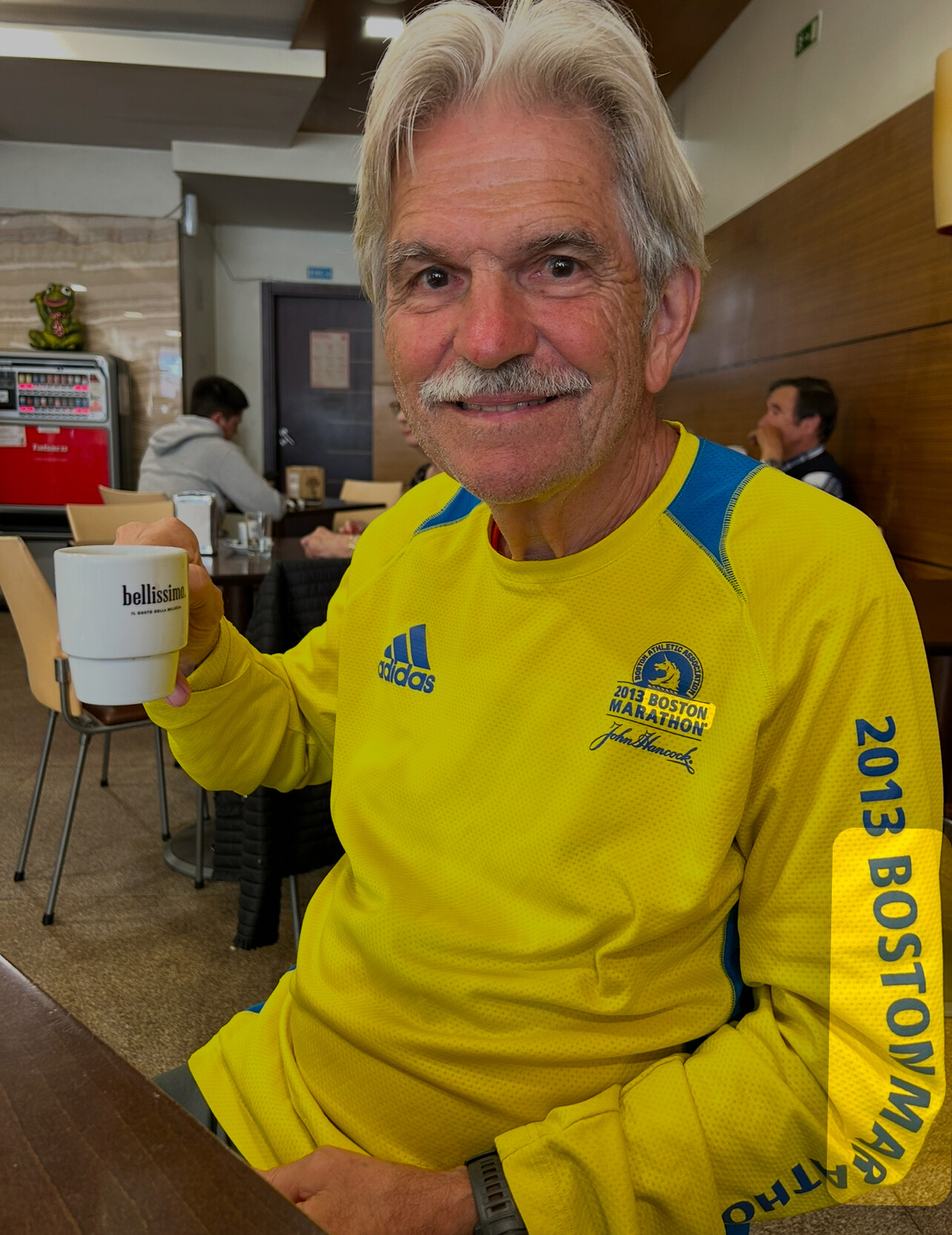
Regardless of the distance, the longest training run should be completed three to four weeks before the marathon. This timing allows your body to recover, adapt, and peak for race day without excessive fatigue.
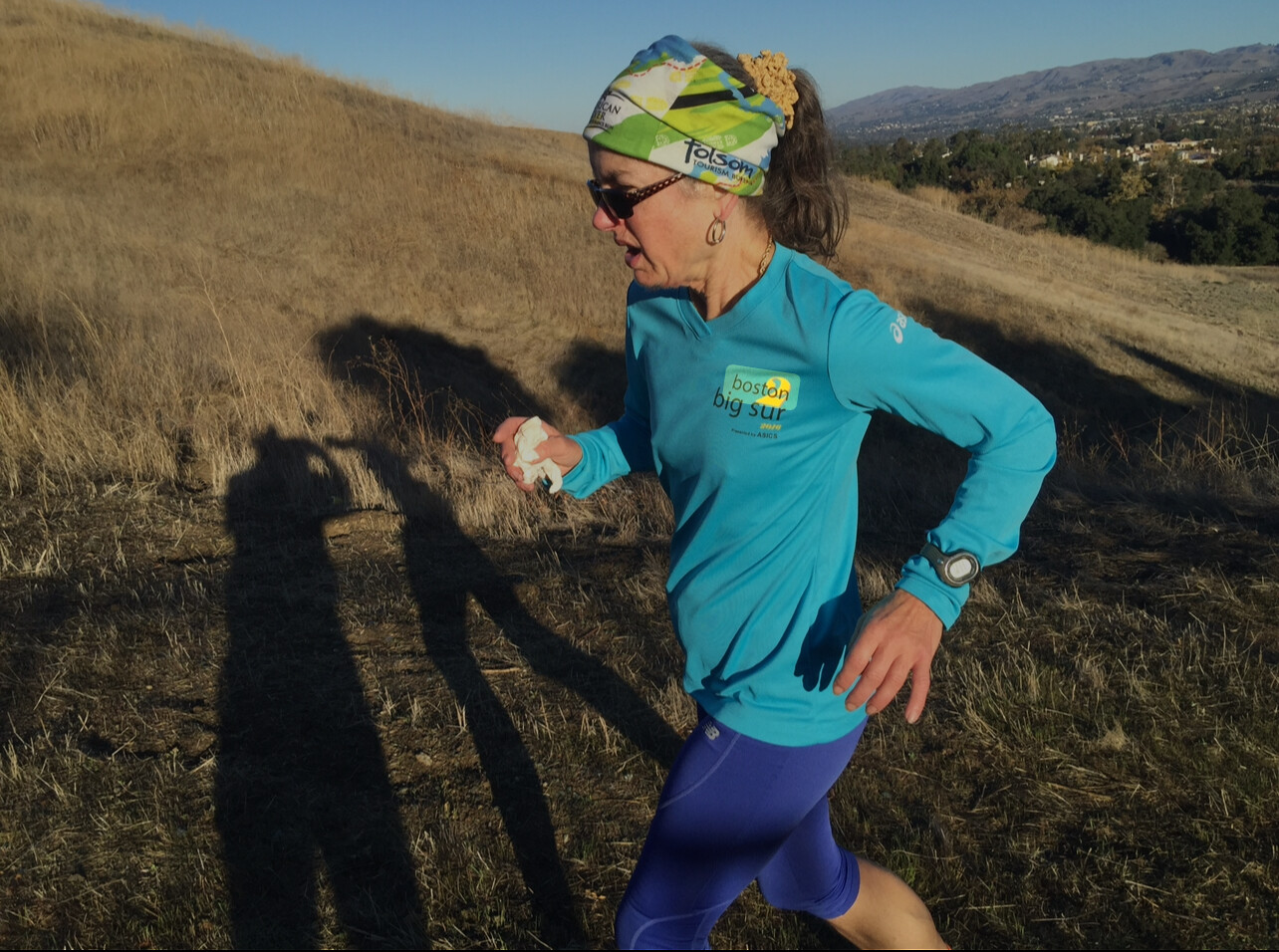
There is no one-size-fits-all answer to how long your longest marathon training run should be. The traditional 20-mile approach works for many, but some runners may benefit from longer runs. Ultimately, listen to your body, consider your goals, and choose a plan that builds confidence while minimizing injury risk.
On race day, the goal is to feel prepared, strong, and ready to tackle the distance—whether you stopped at 20 miles in training or went the extra five.
by Boris Baron
Login to leave a comment
This Girl Scouts CEO Plans to Run a Half Marathon on Every Continent
“Running plays an important role in my professional life as training for a race requires strategy, discipline, and accountability—so does leading an organization.” Reason for Running: I love how much running affects me mentally, physically, and emotionally! I love running by myself and with others.
Most Saturdays I can be found on a long run with my twin sister or my daughter (or both). It is our treasured time to catch up and the miles fly by!Growing up, I never played any sport aside from a short stint with soccer in middle school. I often joked that I would only run if a bear was chasing me and even then, it would depend on the size of the bear! As I was approaching 40, my husband said, “Wouldn’t it be fun to do a half marathon together.” I reluctantly agreed.
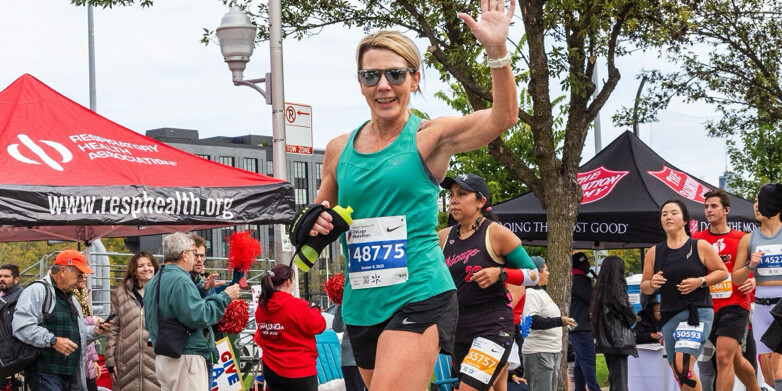
I had zero running gear and only knew how far a run was by tracking the miles when I drove the same route in my car. He loves to tell the story that after a few weeks of my run/walk training, I came home elated that I had run from the school near our home to our neighborhood without walking or stopping. I was so proud of myself. Only much later did I realize that was less than a quarter of a mile!
Soon after, I crossed the finish line of that first race, signed up for my next, and have been running ever since—19 years! I used the Jeff Galloway training schedule for beginners to run that first half marathon.
After that, for many years, I would run two half marathons in the spring and two in the fall and signed up for many 5Ks and 10Ks in between. The first few years, when my kids were young, most of my runs were local. As the years went by, I started combining my love of travel with my love of running. Some of my favorite United States races include the Oregon Wine Country Half Marathon and Nashville Rock n’ Roll.
In 2018, I joined the Seven Continent Club and have run half marathons in Australia, Iceland, Patagonia, Antarctica, and many in the States. I have Africa and Asia planned for 2025 and 2026. If all goes as planned, I’ll complete the seven continents when I turn 60.
After more than 70 half marathons, I decided to train for a full and since fall 2019, I have completed eight full marathons.
A friend once told me that he sets three goals each year—one personal, one professional, and one health. I decided to do the same, and this habit is the reason for so many positive things I’ve done in my life, including earning my MBA, becoming a business owner, and saying yes to my husband when he suggested training for that first half marathon many years ago.
In 2012, I joined Girl Scouts of Eastern Missouri as their chief operating officer and then CEO. I am honored to now serve as the national CEO for Girl Scouts of the USA. Running plays an important role in my professional life as training for a race requires strategy, discipline, and accountability—so does leading an organization. I come up with some of my best ideas on long runs. I think my team rolls their eyes when I have a 20-miler—they probably wonder what ideas I might come back with.
I want our Girl Scouts to find what they enjoy most that best supports their mental, physical, and emotional health. Many of our Girl Scout councils sponsor their own run/walks. I love to see our girls introduced to running through these events.
I now run three to four times a week, cross-train two days a week, and have one day of rest. As soon as I finish one training schedule, I move to the next.
Running has changed my life—the people I’ve met, the goals I’ve achieved, the places I’ve seen—all made possible because of that simple question: “Wouldn’t it be fun to do a half marathon together?” I know I am stronger physically, mentally, and emotionally because of running.These tips have made my running journey a success:
1. Go for just one mile
This habit has served me well so many times when I don’t really feel like going out—especially when it’s too hot, too cold, too windy, too hilly, too late, too early. Just tell yourself “I can run one mile!” It rarely ends up being only one mile!
2. Track your runs
With all the amazing apps out there, I still print my running schedule, I highlight each completed run. The feeling of accomplishment is the motivation for the next day.
3. Support yourself
Positive self-talk is important. Whether it was the best run/race or not so good, own the fact that you showed up. I’m a personal fan of the sign I see at races that says, “Be proud! You’re out here!” And, when you fall off your schedule, don’t throw in the towel until the next week, the next month, or the next race—pick it up the next day.
4. Know it’s never too late
Finally, there’s no time limit on when to begin! Pick your distance and find a training plan. There are fabulous training schedules and wonderful training groups out there. Do your research, choose what works for you, and just start.
by Runner’s World
Login to leave a comment
Bill Thorn Ends His 53-Year Peachtree Road Race Run Streak This July 4
The 92-year-old is the only runner to have completed the famous 10K every year since it began in 1970.
This year’s running of the historic Peachtree Road Race in Atlanta will mark the end of an era. Bill Thorn, the only person to have run what has become the largest 10K in the world every year since it began in 1970, is ending his 53-year race streak. At 92 years old, Thorn thinks it’s finally time. He’s dealt with balance issues over the past few years, and has been racing with the aid of a walker.
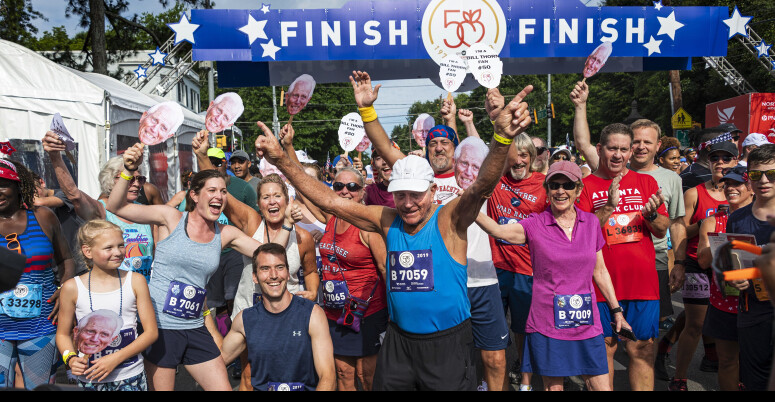
“It’s been really exciting over the years, but there comes a time when you have to let go,” he said in an Atlanta Track Club press statement.
In a year that features the deepest women’s field in the history of the race, including five women who have personal bests faster than the course record of 30:22, it’s not just the elite runners who will be anticipated at the finish line.
On Tuesday, Thorn will be honored as the Peachtree’s Grand Marshal, and he’ll be chauffeured down the 6.2-mile course that he arguably knows better than anyone else in history. Just before the finish in Piedmont Park, he’ll emerge from the vehicle to be celebrated as he crosses the finish line on foot for the last time.
“There is only one way to stop worrying about not finishing, and that is to just be finished,” he said, “I’m going into a new era.”
Thorn has been a lover and booster of running for a long time. He coached athletes across various sports for 64 years, and in 2019, he retired from Landmark Christian School in Fairburn (an Atlanta suburb) where since 1995, he’d led his teams to 42 state championships in football, track, and cross-country.
For many years, Thorn had good company as one of the “Original 110” finishers from the inaugural 1970 road race, but those numbers dwindled over time. He and Don Gamel were the only two who ran every year through 1992, and by 1993, Thorn was carrying that torch alone.
Every Fourth of July, he’s shown up on the start line and hustled up the infamous “Cardiac Hill” in the stifling summer heat and Georgia humidity, whether he was coping with an ankle sprain, heel gash, or something as serious as prostate cancer. In his younger years, he raced his fastest times in the 39-minute range, but over time, the race became more about having fun with his family—his 30-year-old granddaughter, Kenzie Bayman, was his “race day buddy” for several years. The senior runner has been completing the race virtually since the COVID-19 pandemic, running a carefully measured route in his neighborhood.
On the Peachtree’s 50th anniversary in 2019, Thorn said, “It could’ve been just a fad, but as you go along through the years, people like Julia [Emmons, the former Atlanta Track Club Executive Director] says to me every once in a while to ‘keep going’ and that was really encouraging, and so it just became a year after year thing.”
This year, Thorn will be honored with his name engraved on the Peachtree Cup, an honor that up until now has been reserved for race champions, including Aliphine Tuliamuk, Stephanie Bruce, and Jeff Galloway. This distinction is all his own. “No one else will ever be able to say they did the first 50,” he said.
You can stream the AJC Peachtree Road Race on the 11Alive YouTube channel on Tuesday for free. The elite women will start at 6:50 a.m. ET and the elite men will set off at 7 a.m. ET.
by Runner’s World
Login to leave a comment
Here’s how to run a Magic Mile to predict race performance
When long-time running coach and Olympian Jeff Galloway needed a way to predict race performance for his clients (given appropriate training) for multiple distances, he did some research. Galloway spent a decade trying various formulas and using data from the athletes he worked with and his many coaching programs and running retreats, and discovered that the most accurate predictions came from using a one-mile time trial. Galloway calls this workout the magic mile (MM).
The data from a simple one-mile time trial can be used to accurately predict the slowdown that occurs over distance in a 5K, 10K, half marathon and marathon. It can also be a great tool for monitoring progress as you train. Here’s how to run your own MM and how you can use it to predict your own performances on an ideal race day.

Running a MM
Galloway suggests running a MM roughly every two weeks, to monitor progress and have the most accurate mile measurement at the end of your season. If you’re not concerned about exact details and just want a good estimation of your capabilities, inserting one into your training plan when curiosity strikes you is fine, too (just plan it for a day that you have fresh, well-recovered legs).
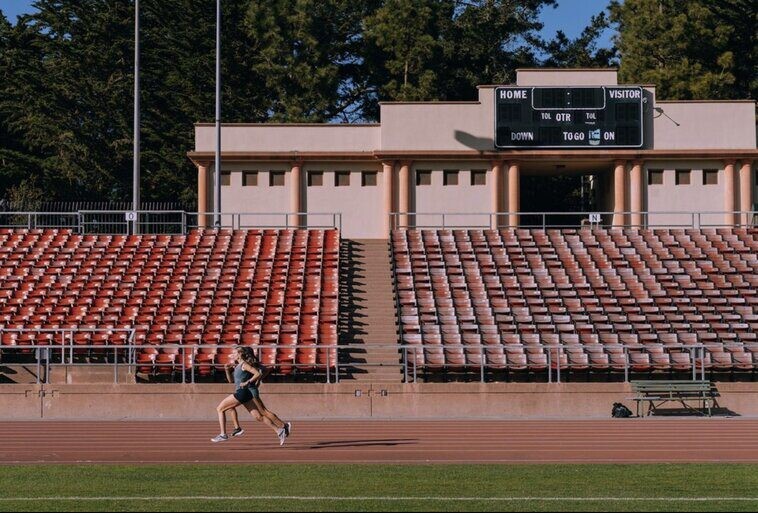
A track is the simplest way to measure your MM, although GPS data and a stretch of flat road works great as well). If you opt for the road, make sure to measure your distance several times before you run your MM–accuracy counts in this calculation.
Warm up with 10 minutes of very easy running, followed by a few accelerations to get your legs ready for a speedy mile run (a mile on a standard 400-meter track is four laps around the inside lane).
Pace yourself as even as possible over each 400-meter stretch. If you’re able to, note how fast you ran each quarter-mile, or take a look afterward at your data for future comparison. Be careful not to take off too hard at the start–run about as hard as you can at an even pace for one mile, without pushing yourself to the point of feeling like you’re going to puke. At the end of the mile, you should feel like you wouldn’t be able to maintain more than a few hundred meters more at that pace.
Cool down by jogging or walking for 10-15 minutes.
How to calculate
You can use the magic mile calculator on Jeff Galloway’s website to work out your training and race paces based on your MM time. If you use min/km to train, you can adjust the pace by dividing by 1.6.
The calculation uses the following formula for pace in miles (we’ve added kilometers, as well):
Add 33 seconds to your magic mile for 5K pace (in miles). To calculate 5K pace in min/km, divide your magic mile time by 1.6 and add 21 seconds.
Multiply your magic mile time by 1.15 for 10K pace (per mile) or by 0.71 for min/km
Multiply your magic mile time by 1.175 for 16K (10 mile) pace or by 0.73 for min/km
Multiply your magic mile time by 1.2 for half marathon pace or by 0.75 for min/km
Multiply your magic mile time by 1.3 for marathon pace or by 0.81 for min/km
by Running Magazine
Login to leave a comment
10 ways to start running even if you kind of hate it
Runners love to hate their sport. Here’s advice for how to get past the pain and make running more fun.
Are you a runner who hates running?
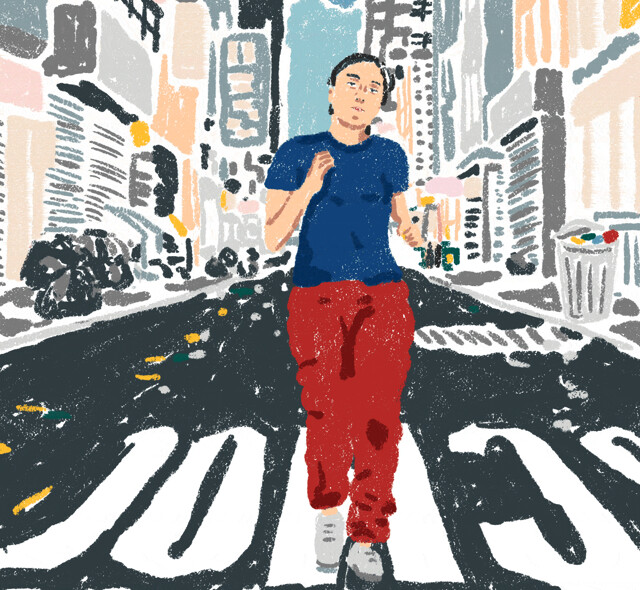
It turns out, a lot of runners don’t love the actual running part of their sport. Running can conjure up memories of pain and punishment from high school sports. It can feel like a chore. Even avid runners who love the sport have had periods where their motivation wanes. One popular search on Google: “How do you start running when you hate it?”
Brendan Leonard, an outdoor adventure writer who runs ultramarathons, said that when strangers learn he’s a distance runner, they often tell him that they hate running, to which Leonard replies, “I hate running, too, man. It’s not that fun.”
And yet, running is one of the most popular forms of exercise with nearly 8 million people around the world signing up to compete in races each year. Running can be cathartic, and people who do it often feel a sense of accomplishment.
The Washington Post asked readers, “Do you hate running but want to do it anyway?” More than 100 people responded with stories of their love-hate relationship with running. Here’s their advice.
Go slower. You can even walk sometimes.
You don’t have to go fast. You don’t even have to run the whole time.
Cody Townsend, a 39-year-old professional skier, found running boring and painful. His endurance coach, Sam Naney, told him to slow down and alternate jogging for 30 seconds and walking for 30 seconds — a run-walk-run training method popularized by Olympian Jeff Galloway.
Townsend ran-walk-ran for 20 minutes several times a week for about four to six weeks. In the beginning, that meant he was running a 12- to 13-minute mile pace.
“If you can run and have a conversation with someone, then you're at the correct pace,” Townsend said. “And once I learned that, that’s what was the key catalyst to improving and then learning to love running.”
Expect the struggle. Embrace the boredom.
The struggle of running is a shared experience with every other runner, from beginner to elite marathoner.
In his book, “I Hate Running and You Can Too: How to Get Started, Keep Going, and Make Sense of an Irrational Passion,” Leonard recommends giving yourself permission to struggle. Running takes time. It requires practice. You need the proper shoes and gear, which can be found at specialty running stores.
Another common refrain from people who don’t like running is that it’s boring. Leonard, 43, agrees. But to him, “Boredom is fertile. It’s a great place to put yourself to actually think, as opposed to something that’s commanding your attention every few seconds.”
Make a game out of it
Mika McDougall, who is married to Christopher McDougall, the best-selling author of “Born to Run: A Hidden Tribe, Superathletes, and the Greatest Race the World Has Never Seen,” realized that she needed extra motivation to run during the frigid winter days of Lancaster County, Pa.
She noticed that in a nearby neighborhood, residents had set up free libraries in their front yards. She started to organize her runs around them. By the end of her runs, she would have a pile of books to take home. She would also drop books off.
“I wanted to vary it up to entertain myself, because you can kind of get into a routine and get bored,” said McDougall, who has since moved to her home state of Hawaii, where the weather is warmer. “It was a fun way to plan the afternoon and get rid of junk around the house.”
Run with a personal coach in your ear
Listening to a running podcast or guided running app during your run is like having a personal coach by your side. You can search for a variety of apps for runners of all levels.
Jess Mullen, 39, an administrative assistant in Philadelphia, says that running is “always a slog.” Listening to the NHS Couch to 5K podcast has helped. The episodes distract her from pain and offer reminders about form and breathing. The podcast is “a completely judgment free, nurturing way into running,” Mullen said.
Mullen’s cousin, 34-year-old Emily Kane, of Philadelphia, runs with Peloton’s guided workouts. “You kind of feel like you’re not by yourself,” she said.
Run with music or entertainment
Music, audio books and podcasts can also serve as entertainment and distraction on a long run. “At low to moderate intensities of running, the reduction in the rates of perceived exertion is around 10 percent” while listening to music, said Costas Karageorghis, a professor at Brunel University in London and author of the book, “Applying Music in Exercise and Sport.”
“It encourages dissociation, which means that runners are not so aware of the fatigue related symptoms from the organs and from the working muscles,” Karageorghis said.
The sweet spot for music tempo is between 120 beats per minute for a low intensity run and 140 beats per minute for a high intensity run.
Look for headphones with “bone conduction technology” and an open-ear design so you can listen to music but still hear traffic and stay aware of your surroundings.
Head to the trails
Trail running allows a change of scenery and an escape into nature. It also gives you “permission to slow down,” said Mike Crowley, 59, of Conshohocken, Pa., who has competed in multiple 100-mile races, including the Eastern States 100 in Waterville, Pa.
“It’s not as monotonous,” Crowley said. “The environment is more appealing and changes through the season. The community of trail runners is very welcoming and a fun group to be a part of.”
The American Trail Running Association (ATRA) lists dozens of trail-running events in the United States every month.
Keep chasing the runner’s high
Not everyone experiences the runner’s high the same way, but research suggests the feeling has to do with endocannabinoids, which are the natural versions of THC and CBD.
“When we say runner’s high, we mean kind of a euphoric effect that some but not all people experience after a bout a physical activity, and also reductions in pain and anxiety and stress,” said Hilary Marusak, an assistant professor of psychiatry and behavioral neurosciences at the Wayne State University School of Medicine. “An acute bout of exercise, whether it’s running or cycling or swimming — or even yoga — was associated with an increase in levels of circulating endocannabinoids.”
Leonard, the outdoor adventure author, starts feeling the runner’s high after 40 to 50 minutes into a run. “It takes a lot of work to get to a point where running is relaxing,” he said.
Practice breathing
A common question beginners ask is how to breathe. Heather Knight Pech, a running coach for McKirdy Trained, said one of the first thing she tells her clients is to slow down their pace.
One breathing exercise Knight Pech recommends to warm up before running is box breathing — inhaling and pausing for three to five seconds before exhaling through the mouth and pausing for three to five seconds. The 60-year-old competitive marathoner practices it before running and going to bed.
While running, Knight Pech suggests inhaling through the nose and mouth but exhaling deeper out of the mouth. The key is slowing it down and avoiding short and shallow breathing. “You do not want to be breathing short,” she said. “And if you are breathing short, that probably means you’re in some sort of stress.”
Find your running community
A number of runners noted that the running community — during training and at race day events — can make running more fun. The Road Runners Club of America offers a comprehensive list of U.S.-based running groups.
Matt Lindner, a 39-year-old Chicago marketing manager, ran high school cross-country and tried to get back into the sport at various points in his adult life with little success. “For me, there was just no point going out on a run when I could sit at a bar and drink beers,” Lindner said.
On a whim, Lindner signed up to run the 2017 Chicago Marathon for charity. He joined the Chicago Area Runners Association, a nonprofit organization with more than 11,000 members. Lindner credits the group for keeping him accountable and reigniting his passion for running.
Pick a fun, weird or quirky race
Running doesn’t have to be all business. In France, runners can sign up for the Marathon du Médoc, a 26.2-mile race through scenic vineyards with over 20 wine-tasting stops along the way. In San Francisco, the Bay to Breakers 12K race routinely draws tens of thousands of participants, many of whom are in costume. Every January, Walt Disney World in Orlando hosts a marathon weekend that includes a 5K, 10K, half-marathon and marathon.
Instead of signing up for a prestigious, big city race, 35-year-old Alex Quevedo of Irvine, Calif., chose the Star Wars Half Marathon in 2015. He wore a Stormtrooper tank top with white shorts for the race.
“There was a casualness to it,” he said. “There was more community.”
Login to leave a comment
Remembering the USA Olympic Trials 10000m 50 years back
50 YEARS AGO the temps hovered near 95 degrees at the start of the 1972 Olympic Trials 10,000 meters.
That's pretty dang hot for a twenty-five lap race...but nowhere near as toasty as the pace that Frank set. His scintillating 4:25.4 first mile was nearly world record pace.
One by one, those that had tried to hang with Shorter got dropped like a bad habit beginning about 2 miles (reached in 8:58.5 by the former Yalie).
Meanwhile Florida Track Club teammates Jeff Galloway and Jack Bacheler, running their own steady-eddy tempo in arrears, began gobbling up the roadkill.
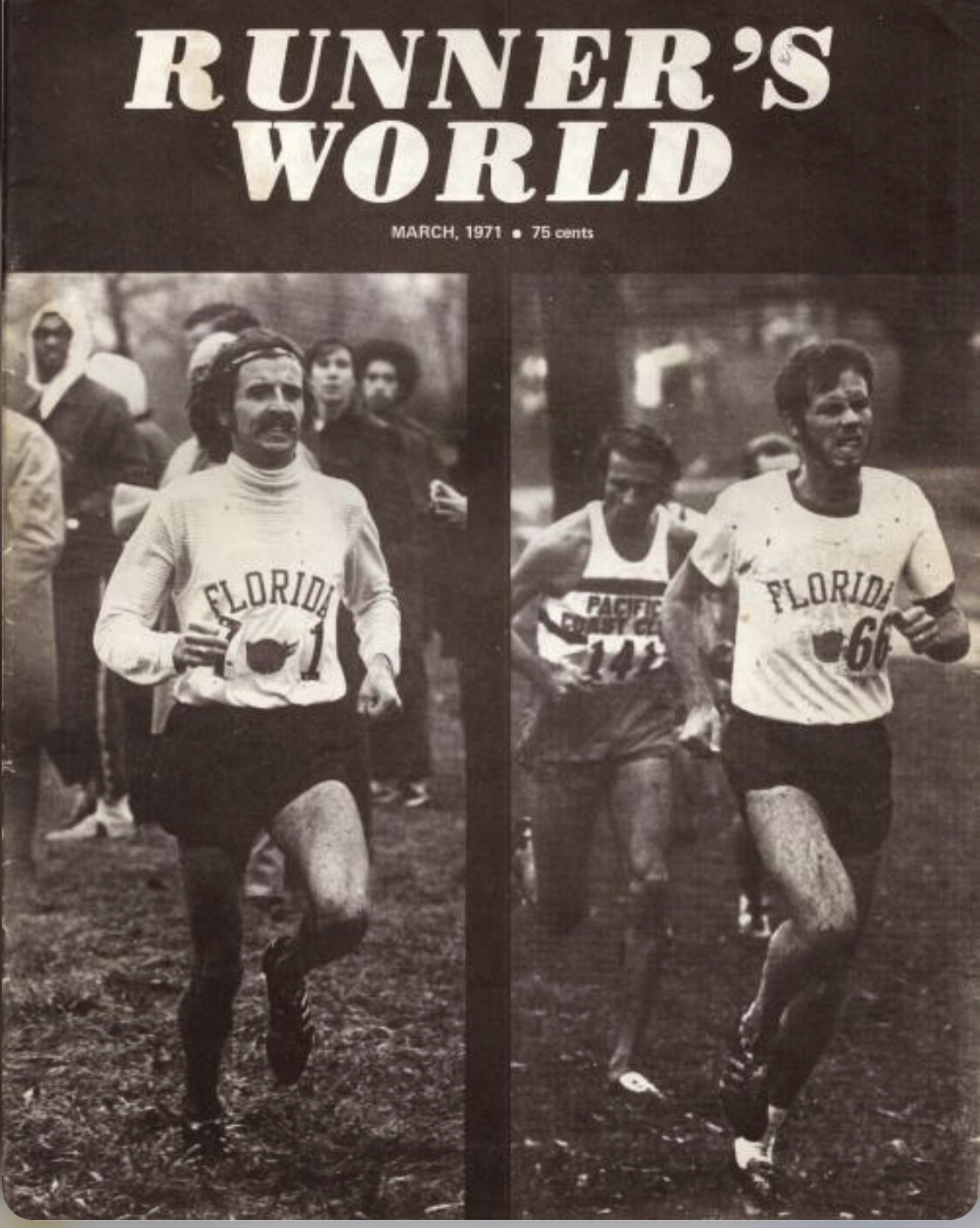
The last to fall off was homeboy Jon Anderson wearing the signature yellow and green striped Oregon TC kit (he had graduated from Eugene's Sheldon High School and at the time of these Trials, his Pop was the Mayor of TrackTown).
Anderson fell back as far as 6th place, some 60 yards out of third, while grabbing his sides as though he was battling a side stitch.
Then all of a sudden with a couple of laps to go, and much to the delight of the partisan crowd, Jon channeled his inner Lazarus, showing new signs of life.
While Frank and Jeff were just too far ahead to be 'catchable', Anderson's late charge reeled in Jack. The pair of lanky distance runners bumped shoulders coming out of the final turn. It was a collision caused by fatigue, not aggression, and drew Bacheler a disapointing DQ, while Jon sped across the finish line, up by 6/10 of a tick.
1 Frank Shorter 28.35.6
2 Jeff Galloway 28.48.8
3 Jon Anderson 29.08.2
4 Tom Laris 29.43.0
5 Bill Clark 29.57.0
6 Don Kardong 30.21.2
7 Gregory Fredericks 30.37.6
8 Dave Antognoli 30.39.6
DQ Jack Bacheler 29:08.9
SIDEBAR: Seven days later in the marathon race, Shorter and Kenny Moore would tie for first while Bacheler, chaperoned by teammate and now 10,000 meter Olympian Gentleman Jeff Galloway, would cruise home in third spot to make his second Olympic Team (Jack was also on the 1968 team at 5,000 meters). Frank finished fifth in the 10,000 meters in Munich clocking 27:51:32 an American record but not good enough for a medal. Frank a few days later won the Olympic Marathon. A feat that helped escalate the running boom in America.
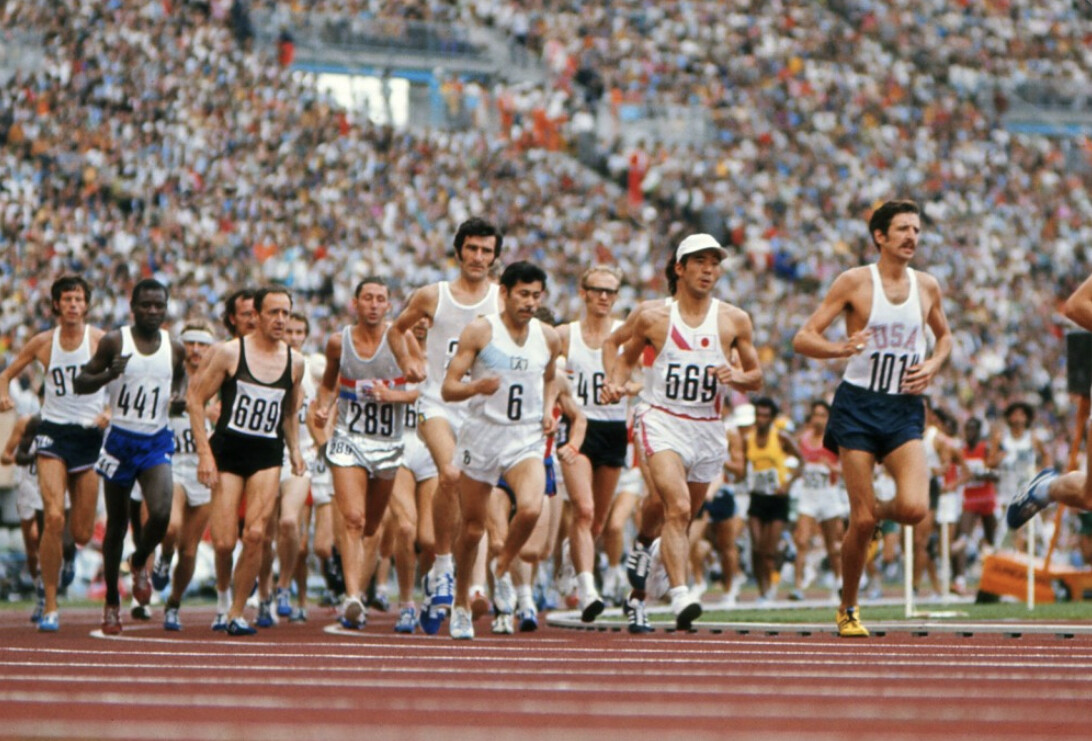
Four years later Frank added a silver medal to that gold when he finished second in the marathon at the games in Montreal.
Postscript from Pete Stein:
Tom Laris made the Olympic team in 1964, competing in the 10,000 … He missed making the team in 1969 … And was one of the favorites, along with Frank Shorter, to make the team in 1972 … For a good portion of the race, he was running with Frank Shorter, well ahead of the other competitors in the race … And then, affected by the heat, ultimately, fading back … Ultimately, he finished fourth, serving as an alternate to the team … and not running in the Olympics
I felt very bad for Tom, because I knew how hard he worked to make the team … and how bad that he wanted to make the team as he knew that it would be his last opportunity
Months later, we crossed paths and I expressed my feelings for him … And he shared some thoughts that I have never forgotten … and which have served me well.
He said, “I believe that everything happens for a reason … And that sometimes things don’t work out the way that I would liked … And at the time, I would be greatly disappointed … but I learned to look for the reason that this happened as I moved on in my life … And ultimately, I would find the reason … And realize that ‘my disappointment at that time’ was a good step in the right direction that led to better things in my life.”
As I said, I never forgot what he said to me … And it served me well in my life.
by Mike Fanelli
Login to leave a comment
Atlanta running legend Jeff Galloway suffers heart attack
After a career of being the cheerleader and coach for those who have come back from injuries and illness, I will now be the athlete on the recovery trail.
Last Monday I was just finishing up a short Elliptigo and rowing session when I got up and suddenly experienced a dizziness that I hadn’t had before. After trying to walk around the house to settle myself, the symptoms got worse - nausea and extreme fatigue.
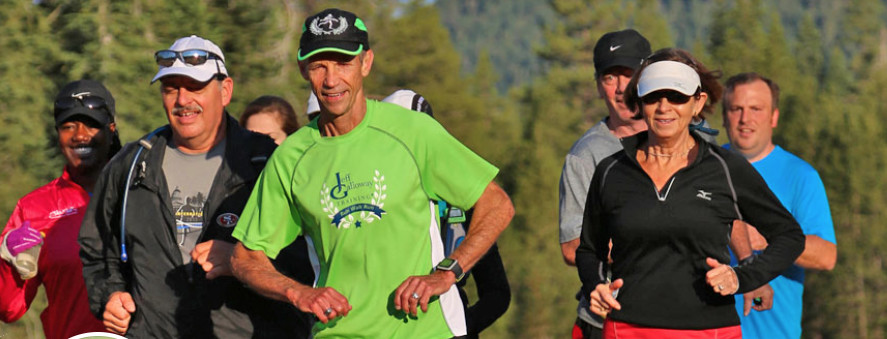
My health and the Piedmont team allowed me to survive what we now know was a heart attack, but even those advantages won’t make it easy to get back to full strength.
My family and I thank you for your support during this recovery time. I will be taking some downtime to recuperate, but I can’t wait to be back seeing everyone at events, retreats, and virtually.
I hope you can get out today and run or walk, hug or call a loved one, and if you are feeling bad GO SEE SOMEONE about it. Doctors and science are pretty amazing!
Login to leave a comment
Running In The Pandemic Era
Running is a unique sport – a runner may venture out for a solo run around the neighborhood or the track, meet up with a running group or crew to run in a small group setting, or participate in events that bring together hundreds or even thousands of runners. The physical, social, and mental benefits of running are well documented: greater muscular and bone strength, increased cardiovascular endurance, reduced anxiety and depression, and improved mood, among other perks. Who wouldn’t want to join in the fun?
Unfortunately, in our current environment of quarantining and social distancing, sharing the sport of running with others in a group setting isn’t possible, and most events are being cancelled or postponed or moving to virtual options in the coming months.
If you are looking to start running as a means to manage stress and get some exercise, the Road Runners Club of America (RRCA) offers advice for getting started on your own!

What do I need?.- Luckily, running requires little physical equipment. Begin by gathering the following:

Clothing. Ideally wear moisture-wicking fabrics. (Cotton is not one of those fabrics, but if that’s what you’ve got, rock that old concert t-shirt!).
A comfortable pair of athletic shoes. Start with whatever you have paired with a moisture-wicking sock. (Again, avoid cotton here, but work with what you have!)Check with your local run specialty store to see if they are open.As a small business, they need your support so consider getting into some new running gear.
Somewhere to run. Keeping appropriate social distancing in mind, if outdoor activity is still a possibility in your city or state, try walking out your door for a jaunt to the corner or a loop around the block. Check out the multi-use trail your community has invested in. Head to the park or the mountains to enjoy the trails.Check first to determine if they are open.Clear the pile of junk off the old treadmill in the basement!.
A little knowledge.Understand the importance of not going out too hard, too far, too fast if you have not been running regularly in recent weeks or months.
Determination. Cross whatever “finish line” you set for yourself.
Set Goals.- Whenever you start a new activity, be it running, basket weaving, closet organizing, homeschooling, or whatever you’re using to fill your time these days, keep the following goal-setting recommendations in mind:
Use your current fitness level as your starting point. If exercise isn’t a regular part of your routine, work your way up to moving your body a few days each week for 15-20 minutes at a time. If you’re used to hitting the gym or going for walks, your starting point will be a little further down the proverbial road. Follow the RRCA’s 10 Week Getting Started Plan.
Make time for physical activity. If you find yourself working from home and getting used to a new routine, set an alarm on your phone. Add it to your calendar. Whatever you need to do to get out and move at regular intervals during your new schedule.
Start slow. Start short. This most likely means start out with a lot of walking and very little running. Walk around the block, around the neighborhood, or to the grocery store to restock. Get your body used to moving for longer periods of time.The more you walk with short bouts of running, the more your body will start to adapt to the exercise.Your goal right now should be to increase movement without injuring yourself.
Make your goals specific to YOU, not your partner, your neighbor, or that elite runner you saw on Instagram. It might be running a specific distance or length of time without stopping. It might be running a certain number of days each week.
Keep Your Momentum.- Endurance and speed come with time and effort. Find joy in what you’re doing, keep it fun, and focus on the long game. Remember that old “marathon vs. sprint analogy?” It obviously applies to running!
Pick up the pace. Incorporate running into your walks. Run from here to the next driveway (or lamppost, or tree, or whatever landmark you see out there), walk some more, then run again. Run more and walk less as the weeks go by. Running legend Jeff Galloway popularized the run-walk-run method. Check out his books and website for more information.
Understand Muscle Soreness.When you first start running you may experience some muscle soreness. Don’t worry, this normal, and you may notice more on the second day compared to the first day. This is referred to as DOMS or Delayed Onset of Muscle Soreness. Do not let it discourage you or keep you from continued movement. But do take a recovery day as needed to reduce the chance of injury.
Challenge yourself and others. Even if you can’t run alongside other people, you can still experience the social benefits of running.
Check out apps like Strava, a social network for endurance sports. Use a mapping tool like Map My Run to find local running routes or create your own. If you’ve got a GPS-enabled watch (Apple, Android, or endurance-specific watches from Garmin, Suunto, Coros, Polar, and others) they’ll have built-in training and social features. These apps and others can track your activities, too, recording distance, time, pace, route, and other metrics.
Have a treadmill? Platforms like Zwift and device-specific services like Peloton Tread and NordicTrack’s iFit let you virtually run all over the world, participate in training sessions, and track your progress.
Switch it up. Running is great, but cycling and weight lifting and Zumba-ing are awesome, too. Many gyms and fitness studios are offering free online content, so try a new cross training workout in your living room!Focus on flexibility and core strength, which is an important aspect of injury prevention for runners.
Rest. Include running-free days in your fitness schedule. Get quality sleep. Acquaint yourself with the yoga mat collecting dust in the corner and follow a running-specific stretch video online. Listen to your body – if you’re not up for running today, try again tomorrow!.
by Colorado Runner
Login to leave a comment
Georgia Tech coach Geoff Collins has a fondness for the AJC Peachtree Road Race
His connection to the world’s largest 10K race, which celebrates its 50th running Thursday, goes deep.
Not only has Collins himself run it, but his father, Billy, ran in the first Peachtree in 1970. Billy Collins, who died in 2015 at the age of 64, loved the Peachtree, Geoff Collins said.Beyond that, Collins grew up in a family of runners for whom the Peachtree was an annual event.
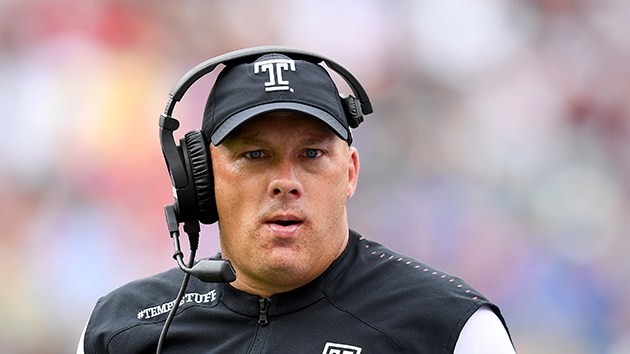
Collins, himself a runner growing up who has one marathon to his credit, has memories that may sound familiar to many Atlantans. Members of the Collins family ran the 6.2-mile race in the morning, “and then we would have a huge family barbecue in the Briarcliff area,” he said.
“That was a great tradition for our entire family for a long, long time, centered around the Peachtree Road Race.” Billy Collins was no mere casual jogger, an identity that hardly existed in 1970 before the running boom took hold in the U.S. To be a competitive runner at that time required a different outlook and mindset, according to Jeff Galloway, the winner of that first Peachtree. Galloway went on to compete in the 10,000 meters in the 1972 Olympics and become an esteemed elder in the Atlanta running community.

“Even though the highly competitive, focused runners are still looked on as a little obsessive – or a lot obsessive –the bottom line today is that there are a lot of people who are running and understand the benefits of running,” Galloway said.Back then, there was no such consensus, at least among non-runners. It makes Billy Collins, then 19, stand out all the more.
Collins, in fact, blazed through the first Peachtree, finishing in 40 minutes, seven seconds, good for 19th among the 110 finishers, a group that has earned prized status as pioneers in a cherished event.
by Ken Sugiura
Login to leave a comment
AJC Peachtree Road Race
The AJC Peachtree Road Race, organized by the Atlanta Track Club, is the largest 10K in the world. In its 48th running, the AJC Peachtree Road Race has become a Fourth of July tradition for thousands of people throughout the metro Atlanta area and beyond. Come kick off your Fourth of July festivities with us! If you did not get...
more...Kenya´s Rhonex Kipruto will be the man to beat at AJC Peachtree Road Race
On July 4, Kipruto will be chasing an even-larger bonus at the AJC Peachtree Road Race —$50,000 in honor of its 50th Running - for breaking the event record of 27:04."I wouldn't put it past him," said Sam Grotewold, director of professional athletes at New York Road Runners, which puts on the Central Park race.
"You could tell (in New York) that you were watching something special even from the first mile or two." And that New York race wouldn't even be Kipruto's fastest 10K of 2018: In September, he won the Birell Grand Prix Prague 10K in 26:46, just two seconds off Komon's world record.
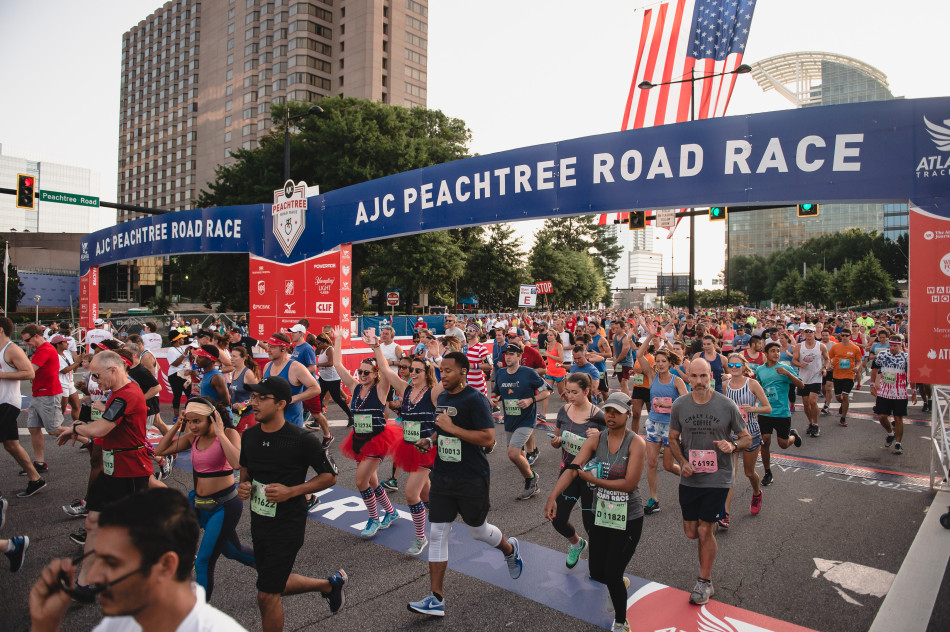
Set by Joseph Kimani in 1996, the Peachtree event record of 27:04 still stands as the fastest 10K ever run in the U.S. and is tied for ninth-fastest in the world. (The net downhill elevation of the Peachtree course means that times here are not eligible for official U.S. or world records.)
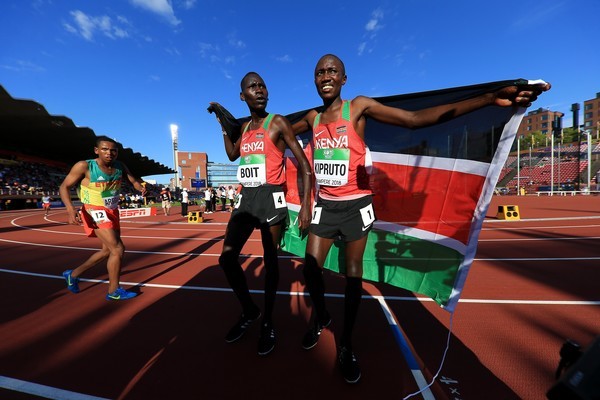
Kipruto said recently that his training is going well, declaring: "I am ready to tackle the race."Coached by the famed Brother Colm O'Connell, an Irish missionary at St. Patrick's school in Iten, Kenya, Kipruto finished sixth in the IAAF World Cross Country Championships earlier this year and is coming off a victory at the Stockholm Diamond League meet on May 30 in 26:50.16.
That's not only the fastest 10,000 meters on the track since the 2017 World Championships, but one of the fastest in almost eight years. And he's only 19 years old. "Distance runners run better as they get into their late 20s," said Jeff Galloway, winner of the inaugural Peachtree in 1970.
Login to leave a comment
AJC Peachtree Road Race
The AJC Peachtree Road Race, organized by the Atlanta Track Club, is the largest 10K in the world. In its 48th running, the AJC Peachtree Road Race has become a Fourth of July tradition for thousands of people throughout the metro Atlanta area and beyond. Come kick off your Fourth of July festivities with us! If you did not get...
more...Susan Glickman has ran every single Disney Marathon and says race is like none other
Susan Glickman from Tampa has logged 655 miles at the happiest place on earth and she isn't stopping anytime soon.
"It is a race like none other," she said.
The Tampa woman has run in every single Disney Marathon since the first one in 1994. She isn't the only one; 75 other runners have completed all 25 of them to date.
"My permanent number now is number 159," she said. "That's another Disney perk is we always get placement in corral A."
And in this race, timing isn't everything. Glickman's best time at Disney is 4:08. That includes the stops she may take en route to finishing the 26.2 miles around the Disney parks.
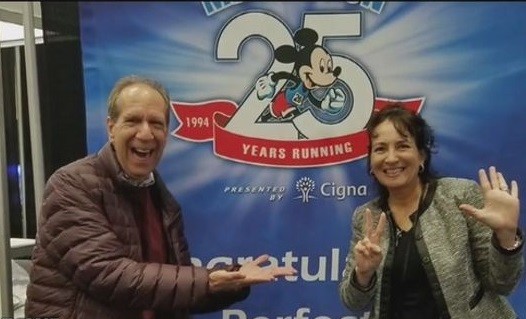
"Around the Animal Kingdom, they have animals, like literally, they will have a warthog or an owl or something that you can pet along the way!"
Glickman has kept every bib and medal from all the races she's run so far: 68 total, including 25 from the Disney marathons.
She's one of 76 who have maintained a perfect record at the house of Mickey Mouse.
"I'm so proud to be part of it and I'm humbled by it," she said. "Literally, Jeff Galloway who's an Olympian, is part of this group. It's like, my name and Jeff's name are literally on the same board for one day!"
Login to leave a comment
How to turn a bad workout into a good one, Running advice from Jeff Galloway
by Jeff Galloway
Login to leave a comment


